The Natural History Museum has a coup – the global premiere of an epic photographic project by Sebastião Salgado, possibly the best-loved photojournalist in the world. It has taken eight years, Genesis is its title, and its scope is unashamedly biblical. Salgado wants to go back to the beginning, to find a world that has not yet been ruined by mankind so that we may see the Eden that time forgot. He wants us to know the animals, plants and indigenous tribes that represent what he calls, controversially, the most pristine parts of nature.
It's a stupendous enterprise, connecting the dark heat of the Brazilian rainforest to the icy light of Siberia, the dazzling dew of an Ecuadorian dawn with the spectral gloom of dusk in the Galápagos. The photographs run into hundreds, taking you soaring high above the Patagonian prairies and plunging deep into smoking volcanoes. They show the tiniest lemur in the world and the largest whale, filling the frame, and one's imagination, as it heaves through the ocean.
Salgado is heroically determined. There is no doubting his awe and fascination, his prodigious energy for crossing continents, for braving the searing cold of a Patagonian winter and the scorching heat of the Sahara in summer, for managing to photograph hippos from a hot-air balloon so that nothing disturbs them at play, for waiting by the brackish pool all day long until the marine iguana finally surfaces.
When it does, Salgado photographs its leviathan tail in extreme close-up, lying in the water like some enormous promontory. Such doublings – mainly metaphorical, sometimes anthropomorphic – occur all the way through the show. A teenage gorilla chews nervously at her fingernail. A baobab tree wears it foliage like a foolish little toupee. The iguana's claw, all five fingers outspread, resembles a hand in a sequined glove.
Salgado rarely goes for the decisive moment – there are comparatively few actions shot in the show, although there is a tremendous image of an anhinga bird (in water) catching a fish (leaping in the air) to turn the world upside down. His images are generally poised, polished and perfected; he works best with absolute stillness.
Perhaps this is why the photographs of the Nenets in northern Siberia are so superb. These people endure the coldest temperatures imaginable. They stand like statues, apparently frozen still, positioned against the snowbound winds that drive the snow across the picture in silvery blizzards. They stand, and they withstand.

The Genesis photographs are smaller than the series that made his name, of the gold miners of Serra Pelada jammed together in a medieval hell of mud, and they do not rely upon religious symbolism for their strength. But they are conspicuously the size and shape of easel paintings and with a full emphasis on photography as art. And not just any art: caimans float in the water like Monet's waterlilies. A forest of ferns becomes a Jackson Pollock. Look at Salgado's photograph of the snowcapped peak of Mount Hudson floating like a mirage across the waves and you are looking straight at a Japanese watercolour.
Salgado's habitual monochrome runs all the way from coal black to silver and burning white, with a thousand tones of grey in between. The lighting is characteristically spectacular, with plenty of backlighting and operatic contrasts. And the further one goes through the show, the more significant the decision to photograph the world in black and white becomes. Nothing can have absolute or accidental priority in monochrome, nothing can leap out simply by virtue of its colour. Black and white puts everything on equal footing, on the same planet.
Lately it has become possible to see many of the wild places Salgado photographs on television, and to realise that his grand romanticism – an old charge against him – is anchored in truth. Anyone who watched John Downer's recent Penguins: Spy in the Huddle on BBC1, with its beautiful score and astonishing images of the lives of rockhoppers, emperors and humboldts, will be very familiar with the numerous penguin scenes in this show.
Thousands of penguins tramping away into the distance do look like people in mass migration or biblical exodus, plagued by exhaustion, hunger and storm. Icebergs really are shaped like castles, rainforests really are so dense it seems as if one could walk on top of them. Salgado doesn't always resist the obvious.
The difficulties start when people begin to appear. A Yali man of West Papua is photographed so that he becomes one with the tree he is climbing, an excrutiatingly tricky shot, given the angle, but which turns him into a human branch. Another is concealed in a thicket of ferns but lost all over again in the picture. Man and nature: Salgado doesn't always draw a distinction. Along with the apes, they are all one continuous habitat.
A wall text explains that he wants us to contemplate "a way of life that is traditional and in harmony with nature". My sense is that this simple ambition will be thwarted by pictures of tribeswomen who've had bones forced through their lips and enlarged, year by year, until the protrusion resembles a pharaoh's beard; of scarified Ethiopians, their wounds created by hooks into which ash has been rubbed to create an infection and "promote scar growth", as the caption blandly puts it. Or the jarring photograph of an Upper Xingu girl posing for a tattoo, in which Salgado focuses his attentions on the body first and the ritual second (it is partially off-stage), emphatically turning the naked girl into a nude.
Salgado has often said his work is political. So it is, in a human rights, save-the-planet kind of way. But his images have grown quite neutral by contrast, as if showing the untouched world in a democratic fashion, image by image, simply spoke for itself. This principle has two adverse consequences. First, it means that there always have to be hundreds of images: everything must be shown or the democratic point is lost. But this has an opposing effect, for the eye cannot sustain the same level of interest (his Grand Canyon looks like anyone else's, his giant tortoise staring curiously back is superb).
But more signally, it leads to an evenness of tone. No let-up in energy, no shift in pace or aesthetic, the same regard for everything he sees. This leopard might be about to leap but Salgado looks as calmly back at it as a field of wheat. The Genesis project looks at – but not into – life. It shows us the wonders of the world, to be sure, but it declares nothing beyond the irresistibly obvious, that we all co-exist.
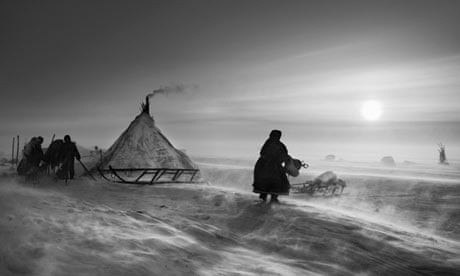
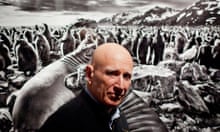
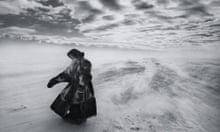

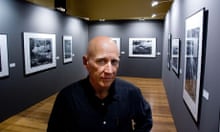
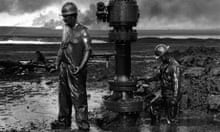
Comments (…)
Sign in or create your Guardian account to join the discussion